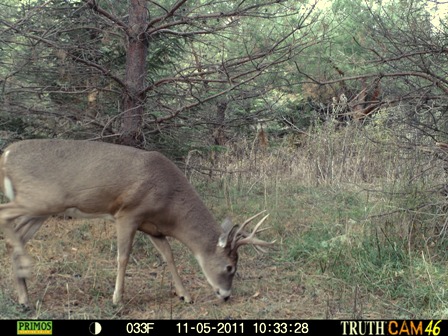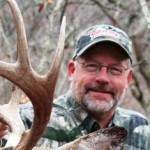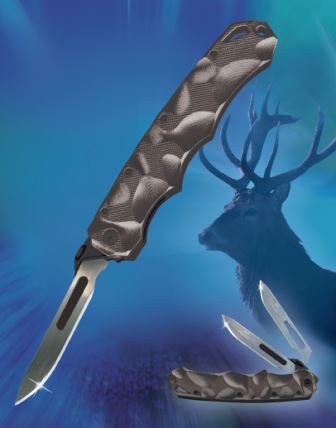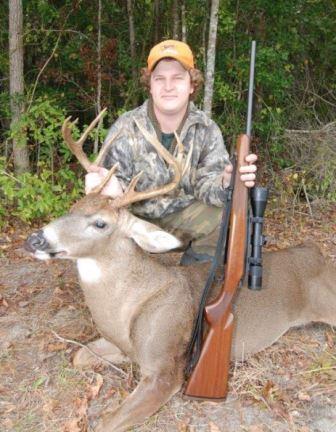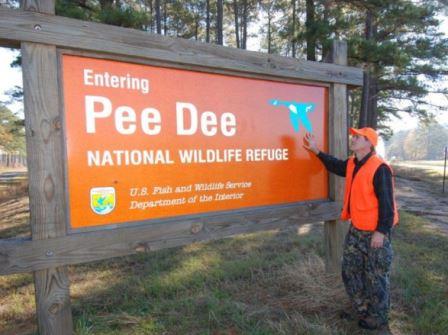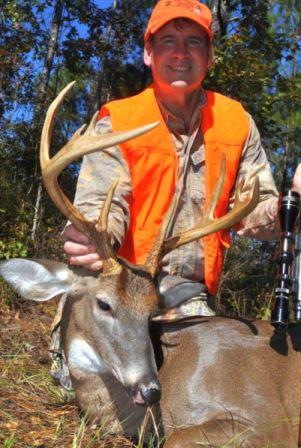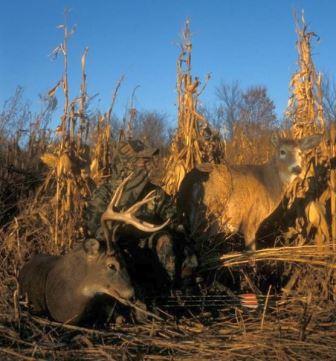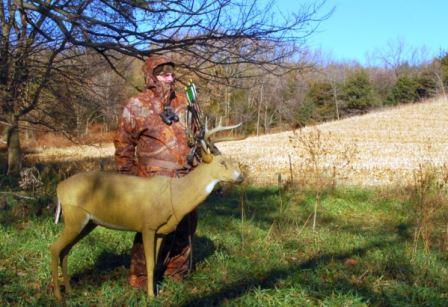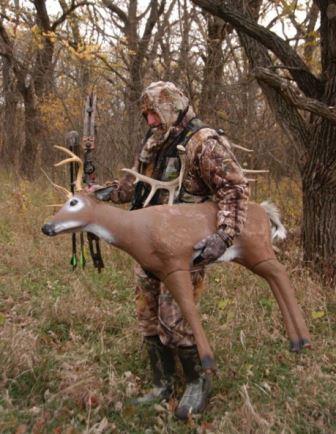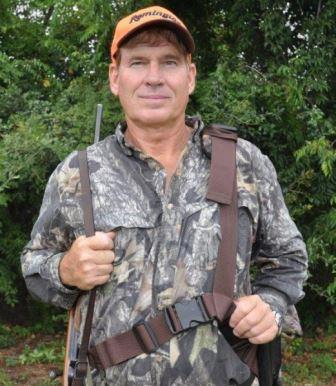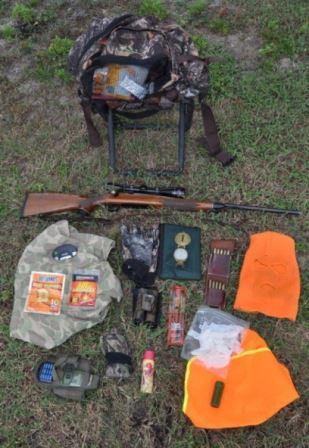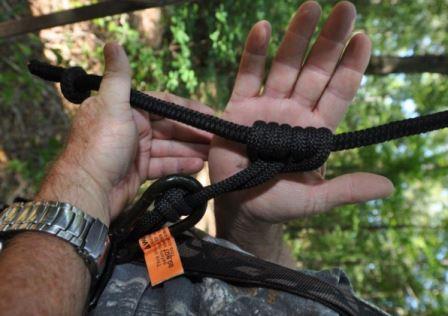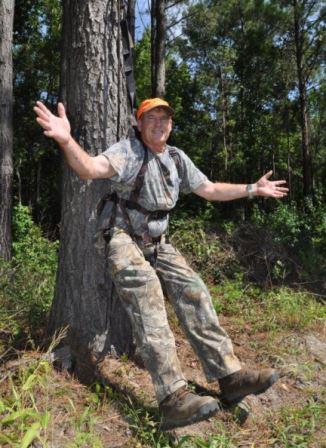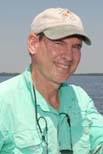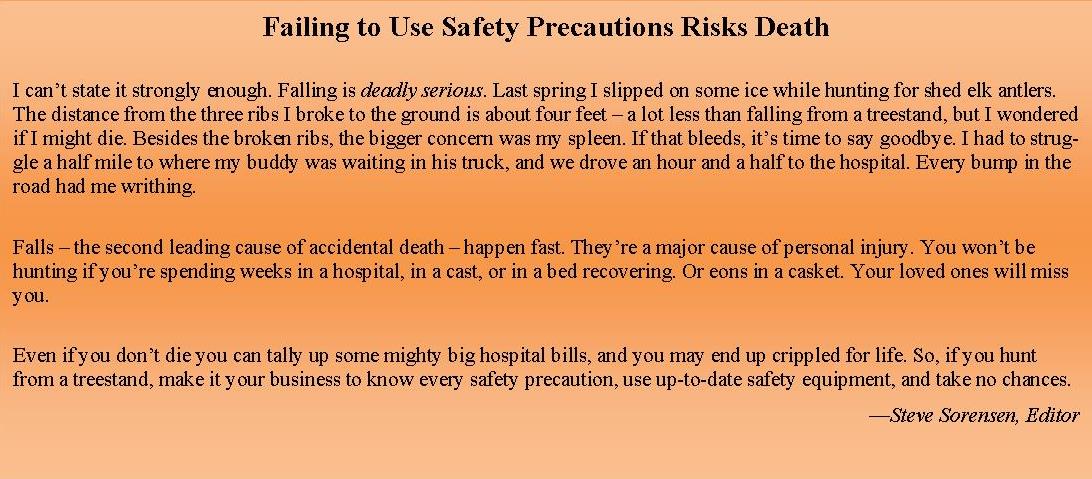By Bernie Barringer
Spice up the scrapes for more daytime action!
Like all serious whitetail hunters, I get excited when I see an area that’s all torn up with scrapes and rubs. It’s proof that a buck has recently been there.

I took a photo of this buck checking a scrape that I had freshened with my own urine right before I shot him.
Several studies have shown that the vast majority of scrape visits by mature bucks are during nighttime, but I have some tricks that turn the odds of daytime sightings in my favor. Try my top six tactics for spicing up the scrapes – each one will increase the odds of getting bucks to the scrapes when you’re in your treestand during legal shooting hours.
1. Fresh Urine
The first thing I tried was quite offbeat but it really worked. I deposited some of my own fresh urine in a scrape. Don’t laugh. (And erase that picture from your mind!) I’m dead serious.
Most store-bought deer urine has an ammonia smell to it and it doesn’t have the fresh smell that deer expect to find in a scrape. My urine is always fresh and deer are very curious about it. After several years, I no longer feel weird standing over a scrape emptying my bladder. I have killed bucks over scrapes with my urine in them, in one case, less than an hour after I put it there. If you have the guts to try this out, you will be convinced. I guarantee it.
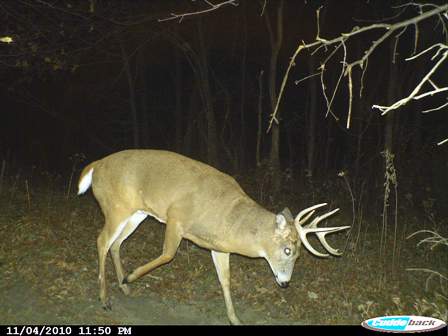
Bucks tend to visit scrapes in the night, especially during October and early November. Using these tactics to enhance the scrapes will increase the odds they will visit the scrapes during legal shooting hours.
2. Foreign Dirt
Bucks and does alike know all the other deer in their home areas. They communicate throughout the year, mostly with scent. If a different deer moves into the area, they notice right away and focus some energy on learning who this new deer is. I’ve discovered how to capitalize on this behavior.
I carry a few clean zipper-seal backs with me at all times. When I come across a hot scrape in an area where I’m not hunting, I often scoop a bag-full of the musty-smelling scrape dirt and take it with me. When I get back to the area where I have a stand, I dump the bag in a scrape nearby. It’s a calling card deer need to check out.
3. Add a Branch
Bucks build almost all large scrapes right under an overhanging branch. They lick this branch and mark it with their forehead and pre-orbital glands.
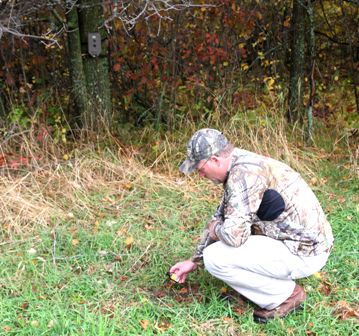
Spicing up a scrape and monitoring it with a game camera is a great way to take an inventory of the bucks in your area.
I like to add a branch to these scrapes by twisting some light wire onto the limb to make an extension. Zip ties work, too. On this added branch I put some doe-in-heat lure. I use a small spray bottle to spray a mist on the branch. Some companies make deer scent in a gel form, such as Special Golden Estrus. The gel helps the scent last longer when globbed on the overhanging branch.
4. Bury the Scent
One of the problems with using scent right in the dirt is that the smell dissipates quickly. Dump a little lure from a bottle on the ground and it soaks into the dirt, then it gets stirred around by the first buck that comes along. It’s soon so diluted that it isn’t giving off much scent. I overcome this problem by using a small plastic container – a film canister or something about that size.
Put two cotton balls in the container and fill it half full of deer lure. Now dig a small hole just large enough for the canister and about a half inch below the surface of the dirt. Put the canister in the ground without the lid, and smooth the dirt back over the top. The buck that comes by gets a more concentrated whiff. You won’t use as much scent, so you’ll even save a little money!
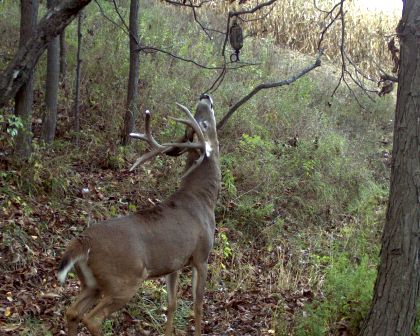
This buck is checking out scrapes during shooting hours. This is what we all want to see! Note the scrape dripper hanging over the scrape.
5. Use a Scrape Dripper
Wildlife Research Center makes a bottle that you can hang over your scrape called a Scrape Dripper. It has a rubber tube on the bottom that allows the lure from the bottle to drip slowly onto the scrape, continually adding fresh lure. It’s designed to drip more when the temperature rises, so it adds more scent to the scrape during the daytime hours. The idea is to condition the bucks to visit during the daytime and draw them to the scrape when you’re on stand.
6. Add Mock Scrapes and Rubs
One of the best ways to enhance the area and attract attention of deer is to add some scrapes and rubs to make it look like the area is a hub of deer activity. You can do this without introducing any foreign scent or deer lures, which can be an advantage if you are dealing with a particularly skittish buck.
I take out my pocket knife and slice a few small trees down to the white inner bark, making it look like a fresh rub. I often use a knife to freshen existing rubs too. These visible indicators of a buck’s presence really get their attention. It might cause them to come over for a look even when the scrapes alone wouldn’t have been enough.
Choose a site under an overhanging branch, and pull away all ground cover, exposing fresh dirt in an area about the size of a garbage can lid. I like to do it with a stout stick and throw the dirt back from the scrape like it was aggressively worked over. In grassy areas you may need to use the tines of a garden rake to work up the sod.
Conclusion
Don’t be discouraged if all the bucks are hitting the scrapes in your area at night. These six tips can help you activate the scrape clusters and bring out more aggression in bucks. Try some of these tactics this year and I’ll bet you agree that the bucks take notice. At the very least you’ll get more game camera photos of bucks – and at the best you’ll end up in a photo gripping a nice set of antlers!
Bernie Barringer hunts a variety of species in several states and Canadian provinces. He has published more than 400 articles in two dozen outdoor magazines and authored ten books on hunting, fishing and trapping. The latest is Bear Baiter’s Manual. He is the managing editor of Bear Hunting Magazine, and blogs his hunts on his website www.bowhuntingroad.com.
After you’ve landed the buck, the hard work is made easier with the new Piranta Black Stag hunting and skinning knife from Havalon Knives! Click here:
5,373 total views, no views today


